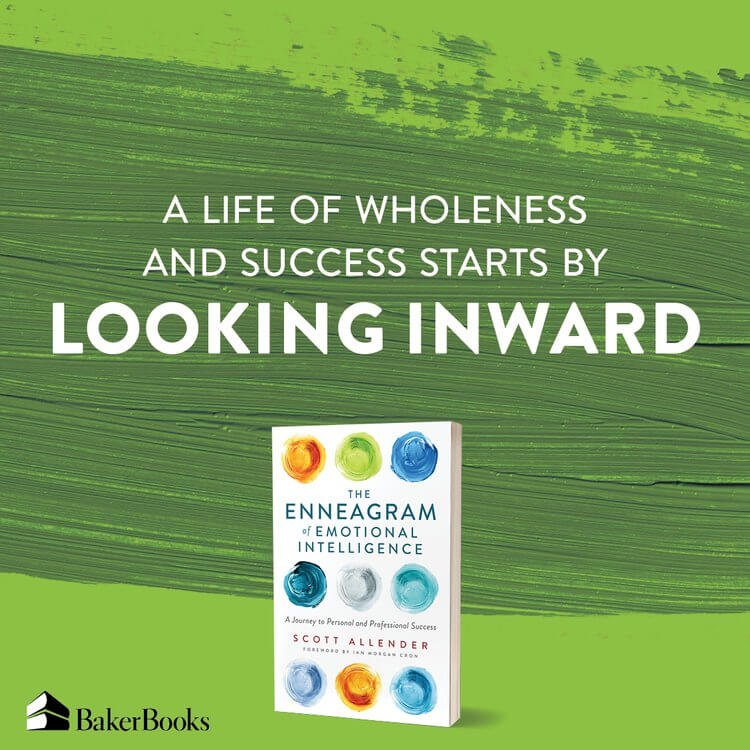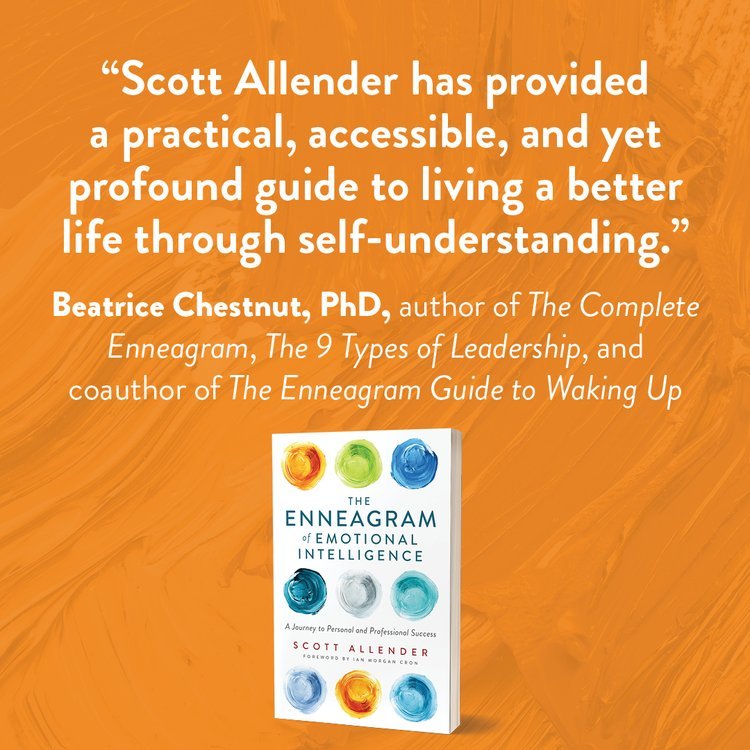The Passions and The Virtues of the Enneagram
by Stephanie Barron Hall (@ninetypesco) and Scott Allender (@eqenneagram)
Read this post on Instagram here.
This blog post covers an important Enneagram theory - if this is your first introduction to it, try to keep an open mind as you digest the information. What rings true? How might you find more awareness and understanding through self-observation?
The Passions (also called Vices)
The Passions are reactions to the wounding messages of our childhood. Somewhere in our stories, we internalized a message that it wasn’t safe for us to be who we really are, so we unconsciously put on a mask to help us survive and get our needs met. The passions are a type of emotional “vice”. And vices control us – we do not control them. The passion of our type is bigger than any other emotional state we have, is always present, and informs what we believe, feel and do. Doing the inner work of the enneagram is, in many ways, learning to step out of our stories and limiting beliefs, so that the passion can begin to loosen its grip on us, and we can start to live from our place of virtue (our true self) again.
In this post, we swapped out “passion” for “vice” since the former is often used in the positive, but in this instance, we’re talking about something that is driving us in an unhelpful way.
The Virtues
The Virtues represent who we are in higher emotional awareness. They are expressed when we let go of the emotional vices of our personality, which is who we are in lower emotional awareness. The virtues represent our truest, most authentic expressions of ourselves, and are always the complete opposite of the passions, which represent our less authentic, egoic selves.
The path between vice and virtue requires self-observation, self-awareness, and commitment to growth. Lifelong inner work helps us move toward our virtue.
Type One
The Vice of anger looks like:
· channeled into hostility toward what is imperfect
· directed at whatever is not ideal and trying to fix it
· marked by criticism, judgment, or a sense of tension in the body
The Virtue of serenity looks like:
· extraordinarily calm, relaxed, and filled with a sense of balance within the body
· allowing life to be exactly what it is, and without containment
· it is freedom
Type Two
The vice of pride looks like:
· a need to be important to people
· cycling through self-elevation and devaluation
· viewing the self as the one who can deliver help without needing anything in return (and yet using expectation as a manipulation tactic)
The virtue of humility looks like:
· knowing how important they are without feeling the need to increase or decrease their self-worth
· letting go of the belief that others need them to survive and allowing the self to be exactly as important & worthy as they are
Type Three
The vice of self-deceit looks like:
· an over-identification with the personality or outer persona
· believing they have to earn love by being worthy
· being the shape-shifting tendency itself
· taking on the ideas/desires of others as their own personal identity.
The virtue of veracity looks like:
· being nothing but who they really are without regard of what others think
· pure authenticity
· slowing down and acknowledging their own personal feelings – content to just “be”
Type Four
The vice of envy looks like:
· a sense of lack, especially having to do with believing they are missing something that others have, therefore others are happier, better, more deserving, etc.
· a sense of inner deficiency
· feeling inferior OR superior (comparison)
The virtue of equanimity looks like:
· balance in how they see the self and others
· become detached from emotions in a healthy way - emotions exist but not in control
· become more grounded in their bodies and recognize that they have all that they need & nothing is missing
Type Five
The vice of avarice looks like:
· withholding out of fear of depletion
· holding too tightly to what they already have (resources, energy)
· the heart shuts down for both giving and receiving
· compulsion to hoard (knowledge, energy)
The virtue of non-attachment looks like:
· an open-handedness around emotion, energy, and resources, which leads to a sense of generosity
· in sync with the flow of life - no need to hoard time, knowledge, or energy, for there is no impending impoverishment
Type Six
The vice of fear looks like:
· subconscious need to protect the self from everything happening around them
· accelerating thoughts and conclusions as a result – this acceleration can feel like spinning in their minds
· hesitancy to do anything permanent
The virtue of courage looks like:
· taking responsibility for permanent action
· not delegating authority or power to others but taking charge and becoming the leader of their own life
· doing things with the heart open & vulnerable
· giving reassurance to oneself
Type Seven
The vice of gluttony looks like:
· indulgence of life
· a desire to sample everything life has to offer without limitation
· the pursuit of MORE - at least a little bit of everything
· jumping around from experience to experience
The virtue of sobriety looks like:
· being grounded in the moment; undistracted
· in touch with the self & with the present, rather than running to the next jolt of excitement or interest
· focused on what is in front of them & truly experiencing their lives
· coming home to a deeper part of the self
Type Eight
The vice of lust looks like:
· a passion for excess
· “anything worth doing is worth overdoing”
· can be about some sort of physical gratification, but it’s mostly about finding a more intense experience and getting more out of life
· often marked by reactivity
The virtue of innocence looks like:
· responding in a fresh way to each moment without judgment, memory, or expectation
· an openness and vulnerability to be impacted by the moment
· often marked by non-reactivity
Type Nine
The vice of sloth looks like:
· a “psycho-spiritual” laziness - the state of not being in touch with the core self
· asleep to the true essence - spend energy outside (to keep the outside world out and the inside world in) rather than paying attention to the self
The virtue of right action looks like:
· really refers to “right action”
· a sense of action that is ingrained in the core sense of self - total engagement with the self and a willingness to act on it
· full commitment of the self to doing what is needed
NOTES:
We (@eqenneagram & @ninetypesco) wrote this post based on our conversations, our individual understandings, and observations of the passions. If you want to learn more about this important piece of enneagram theory, we recommend listening to the Enneagram 2.0 podcast episode called “The passion, the virtue, and the path between them” (May 28, 2020). Uranio Paes and Beatrice Chestnut do an incredible job of explaining the passions in detail in that episode!
You can also learn more about the passions of the types in Scott Allender’s book, The Enneagram of Emotional Intelligence: A Journey to Personal and Professional Success.
The Enneagram of Emotional Intelligence offers an incisive perspective on why white-knuckling sustainable, soul-level change doesn't work – and what to do instead. Using insights from the Enneagram, emotional intelligence coaching, and decades of experience in leadership, Allender guides readers to understand and apply their Enneagram knowledge for personal and professional development. I've read dozens of Enneagram books, but this is one that will stick with me, and I anticipate recommending it time and again.
— Stephanie Barron Hall, Author, Enneagram Practitioner, Creator of @NineTypesCo
Meet the Authors
Steph Barron Hall
Stephanie Barron Hall (M.A. Organizational Communication & Leadership) is a speaker, certified Enneagram coach, author of the book, The Enneagram in Love: A Roadmap for Building and Strengthening Romantic Relationships. Stephanie founded her Instagram page, @NineTypesCo, in 2017 as a way to explore her own interest in the Enneagram, and it has since grown into a community of people who are learning about the Enneagram, themselves, and their relationships together. Stephanie specializes in bringing clarity to complex concepts and communicating the Enneagram in a way that is relatable and concise so that it can be transformative for all.
Scott Allender
Scott Allender is currently the Senior Vice President of Talent Strategy & Development at Warner Music Group, and an expert in global leadership and organizational development. Scott is a professionally certified enneagram teacher, certified Myers Briggs and Hogan practitioner, and a certified emotional intelligence coach. Scott is also the cohost of The Evolving Leader Podcast (co-hosted with Jean Gomes). Scott is also the creator of a multi-award-winning leadership development program and has built a broad curriculum of custom workshops and programs that accelerate organizational performance. Scott regularly teaches enneagram workshops, conducting typing interviews, and emotional intelligence assessments for individuals and teams who seek to become more radically self-aware and cognizant of the impact they have on the world. He also shares weekly enneagram insights on Instagram at @eqenneagram. Scott is a husband, and father of two amazing daughters.







